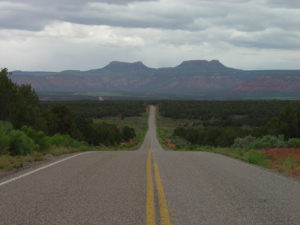PLF urges the Administration to reverse Antiquities Act abuses
As readers of this blog are aware, many Presid ents have abused their power under the Antiquities Act to prevent productive use on federal lands (and on the ocean). President Trump has ordered a review of several of these Monuments, and the Department of the Interior has solicited comments from the public.
ents have abused their power under the Antiquities Act to prevent productive use on federal lands (and on the ocean). President Trump has ordered a review of several of these Monuments, and the Department of the Interior has solicited comments from the public.
Yesterday, PLF submitted comments on the administration’s review of the Bears Ears National Monument. The Monument is located in southeastern Utah and is representative of other Antiquities Act abuses that have occurred since the 1970s. The Proclamation lists several different types of “objects” that are purportedly of historic or scientific interest but relatively few of those objects are actual antiquities. Instead the Monument removes productive use from 1.35 million acres of land and was created unilaterally despite strong opposition from federal, state, and local elected officials from Utah—who were working on congressional legislation that would have provided enhanced protection for certain sites and balanced other interests.
In our Comments, PLF argues that the President has the authority to rescind or reduce previously designated monuments. Implicit in the delegation of authority in the Antiquities Act to designate Monuments is the power to revoke Monuments. This is confirmed by the practice of past U.S. Presidents, some of who have significantly reduced the size of established Monuments.
PLF also recommends that the President rescind or reduce the Bears Ears National Monument. A monument designation is not necessary to protect the natural and manmade resources in the area. Use of public land is subject to various federal, state, and local laws designed to protect the area.
In fact, in addition to being unnecessary, additional regulations may make it harder to protect resources in the Bears Ears area. Instead, cooperation with state authorities and owners of private adjoining land often promotes better land-use decisions, including protections. Multiple use also ensures that the Department of Interior receives enough revenue to maintain the area in accordance with federal law.
For decades, residents near the Bears Ears area have used and protected the land in a way that is no longer allowed. As a local businessman put it, these local people “are the reason it is still in the relatively pristine condition that others deem worthy of protection.” By rescinding or reducing the Bears Ears National Monument, the administration can ensure that locals can continue to use the land productively, while also safeguarding the area for the future.


